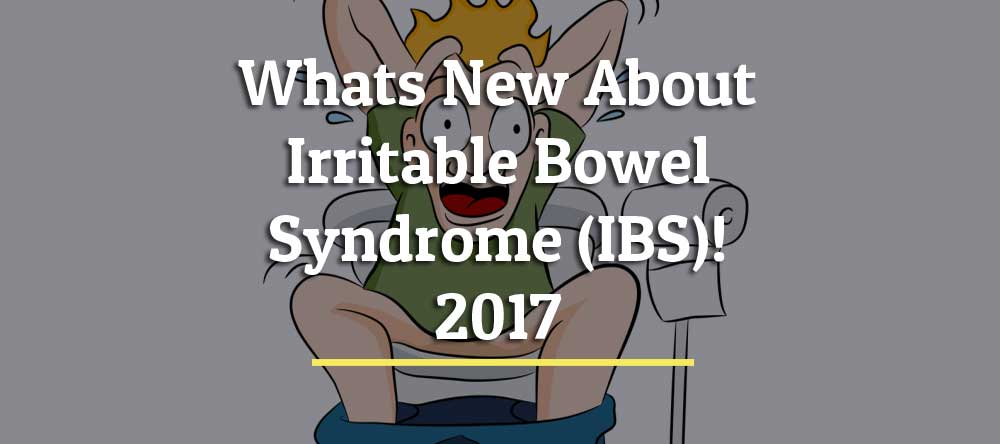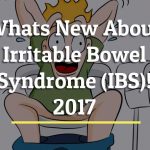Irritable bowel syndrome (IBS) is characterised by recurrent abdominal pain in association with abnormal defecation in the absence of a structural abnormality of the gut. About 10–15% of the population are affected at some
time but only 10% of these consult their doctors because of symptoms.
Nevertheless, IBS is the most common cause of gastrointestinal referral and accounts for frequent absenteeism from work and impaired quality of life. Young women are affected 2–3 times more often than men. Coexisting conditions, such as non-ulcer dyspepsia, chronic fatigue syndrome, dysmenorrhoea and fibromyalgia, are common. Between 5 and 10% of patients have a history of physical or sexual abuse.
The cause of IBS is incompletely understood but bio-psychosocial factors are thought to play an important role, along with luminal factors, such as diet and the gut microbiota. For this making diagnosis become tough for physicians.
According to The Rome Foundation–
New diagnostic criteria: “Rome IV Criteria” for IBS
Recurrent abdominal pain at least 1 day per week associated with two or more of the following –
- Related to defecation.
- Onset associated with a change in the frequency of stool.
- Onset associated with a change in the form of stool.
Rome IV expanded upon this concept with an agreed-upon definition: Disorders of gut-brain interaction. These disorders are classified by GI symptoms related to any combination of:
- Motility disturbance
- Visceral hypersensitivity
- Altered mucosal and immune function
- Altered gut microbiota
- Altered central nervous system (CNS) processing
This definition is most consistent with our evolving understanding of multiple pathophysiological processes that, in part or together, determine the symptom features that characterize the Rome classification of disorders.
IBS subtypes:
Subtyping based only on when stools are abnormal consistency in the absence of therapy.
 Current subtypes includes-
Current subtypes includes-
- IBS – A [19-49%] (Alternating IBS),
- IBS – C [19-44%] (IBS with Constipation) and
- IBS – D [15-36%] (IBS with Diarrhoea)
- IBS – U (unclassified IBS)
Proportions of patients in each subgroup stable over time but-
- 75% will experience a change in subgroup over time.
- More likely to transition to IBS-C than to IBS-D.
- Transition from IBS-C to IBS-D in less than a third of patients over a year.
Difficulties in diagnosing IBS:
Common comorbidities in IBS-
- Major depression
- Fibromyalgia
- Chronic fatigue syndrome
- Anxiety
- TMJ disorder
- Chronic pelvic pain
- Painful bladder syndrome/Intestinal cystitis
- Somatoform disorders
Alarm features in patient with suspected IBS:
- Onset of symptoms after age 50
- GI bleeding or Iron deficiency anemia
- Nocturnal diarrhoea
- Weight loss
- Family history of organic GI disease (Colorectal cancer, IBD, Celiac disease)
Biomarkers of IBS:
- Rule out organic diseases that mimic IBS: Cancer, IBD/microscopic colitis, SIBO, Celiac disease, BAM, Food intolerance.
- Rule in IBS: Biomarker panels based upon abnormalities in pathophysiology (serotonin, permeability, immune activation, etc.). Biomarker based upon prolonged response to enteric infection (anti-CdtB & vinculin antibody).
IBS vs Microscopic colitis:
Favors IBS-
- Meal related diarrhoea.
- Intermittent symptoms.
- Longstanding symptoms.
- Symptoms with stress.
- Family history of IBS.
Favors Microscopic colitis-
- Nocturnal diarrhoea.
- Unrelenting symptoms.
- Short symptom duration.
- New drug in last 1-3 months.
- Other autoimmuno disorders.
Celiac disease in Patients with IBS symptoms

Breath testing for SIBO in IBS:
- Breath tests are not validated to accurately detect SIBO.
- There is insufficient evidence to recommend lactulose or glucose breath tests to identify SIBO in patients with IBS.
New diagnoses in Rome IV
1) Reflux hypersensitivity syndrome-
- Heartburn or chest pain with normal endoscopy.
- Reflux triggers symptoms despite normal acid exposure.
2) Cannabinoid hyperemesis syndrome-
- Steriotypical vomiting similar to cyclic vomiting syndrome occurring with excessive cannabis use and symptoms.
- Relieved after discontinution.
3) Opioid induced constipation-
- Development or worsening of constipation symptoms ( hard or infrequent stools, straining, incomplete evacuation) when taking opioids.
4) Narcotic bowel syndrome-
- Progressive and paradoxical increase in abdominal pain despite continued or escalating dosages of opioids prescribed to relieve pain.
- Improves with detoxification.
After reading that, It become very easy to understood and acceptable to clinicians, academicians, regulatory agencies, the pharmaceutical industry, and to patients.







Very good website – bookmarked
I think the admin of this site is really working hard
for his web site, because here every data is quality based
material.
Thanks for appreciating us.
Hello, this weekend is good designed for me, since this moment i am reading this wonderful informative post here at my
home.
Great Job. Happy weekend.
It works very well for me
I am glad to be a visitor of this everlasting website! , regards for this rare info ! .
Very new info’s….
Thanks, it is very informative
Thanks, it is very informative
It works really well for me
Thank you for the wonderful article
This is truly helpful, thanks.
I spent a great deal of time to locate something like this
It works quite well for me
This is really helpful, thanks.
Thanks, it is quite informative
It works really well for me
Fresh articles.
best about IBS
Hi quality content.
I simply could not depart your site before suggesting that I extremely enjoyed the standard information a person supply in your visitors? Is gonna be back frequently in order to investigate cross-check new posts.
I truly wanted to develop a quick word in order to express gratitude to you for these remarkable solutions you are sharing on this site. My time intensive internet investigation has finally been honored with high-quality information to share with my relatives. I ‘d express that we site visitors actually are very blessed to dwell in a useful site with many perfect individuals with interesting tactics. I feel very much blessed to have encountered your web page and look forward to so many more amazing moments reading here. Thanks a lot once again for all the details.
I must voice my gratitude for your generosity giving support to individuals who actually need assistance with your subject. Your special commitment to getting the solution up and down had been certainly powerful and have regularly permitted employees much like me to attain their aims. Your entire invaluable guideline denotes a whole lot a person like me and much more to my office workers. Regards; from all of us.
I have fun with, result in I discovered just what
I used to be having a look for. You’ve ended my four day lengthy hunt!
God Bless you man. Have a nice day. Bye